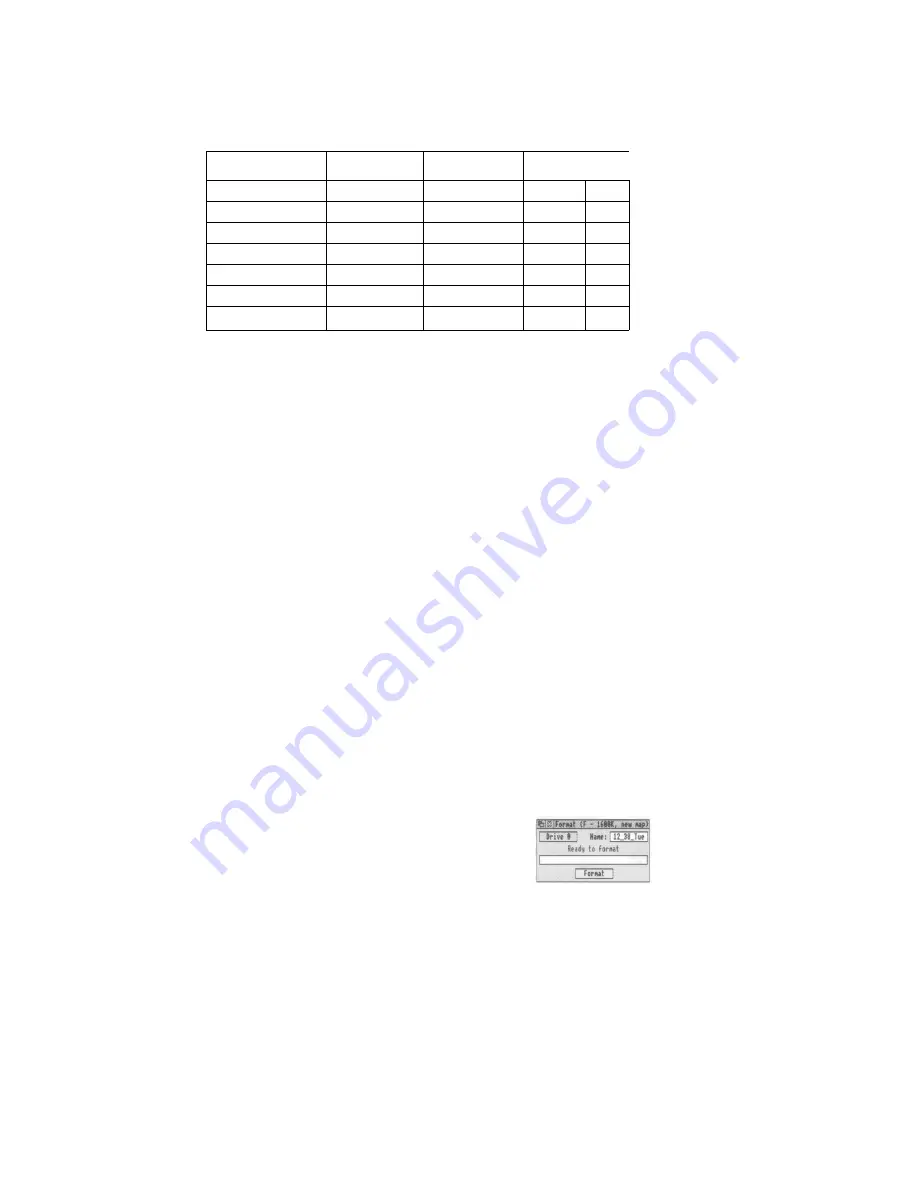
Formatting a floppy disc
Your computer can also format discs for filing systems other than ADFS, as shown
in the following table:
Unformatted size
Filing system
Formatted size
Density
1MB
ADFS
800KB
double
DD
2MB
ADFS
1.6MB
high
HD
1MB
ADFS
640KB
double
DD
2MB
DOS
1.44MB
high
HD
1MB
DOS
720KB
double
DD
1MB
Atari
720KB
double
DD
1MB
Atari
360KB
double
DD
Note: To ensure reliability, only format discs in accordance with the above table:
The next section tells you how to format a floppy disc:
Formatting a floppy disc
Before you can use a new floppy disc, you need to format it. Formatting a disc
prepares it to receive information from the computer: This is rather like drawing
straight lines on a blank piece of paper before you start writing on it: It tells the
computer where to put the information — it writes along the lines (called tracks).
Formatting also tells the computer how much information a floppy disc can hold.
Warning!: When you format a disc, any data that was previously stored on it is
permanently lost. So, don't reformat a disc unless you are certain that you no
longer require the data stored on it.
1 Insert the disc in the floppy disc drive
2 Display the Format submenu
Move the pointer over the floppy disc drive icon
on the icon bar, and click Menu:
Move the pointer to the right of the Format
option, to display the Format submenu:
3 Click on the format you want
Choose the format appropriate to your disc: You'll
probably want ADFS 1.6M (high density) or
ADFS 800K (E) to start with, but check in the
RISC OS 3 User and Applications Guide if you're
not sure: The Format window will appear:
30
Summary of Contents for A3010
Page 1: ...Acorn A3010 Welcome Guide...
Page 2: ......
Page 3: ...Acorn A3010 Welcome Guide...
Page 4: ...ii...
Page 12: ...X...
Page 74: ...62...
Page 78: ...66...
Page 115: ......
Page 116: ......
Page 118: ......
Page 119: ......
Page 120: ...AGJ01...
















































